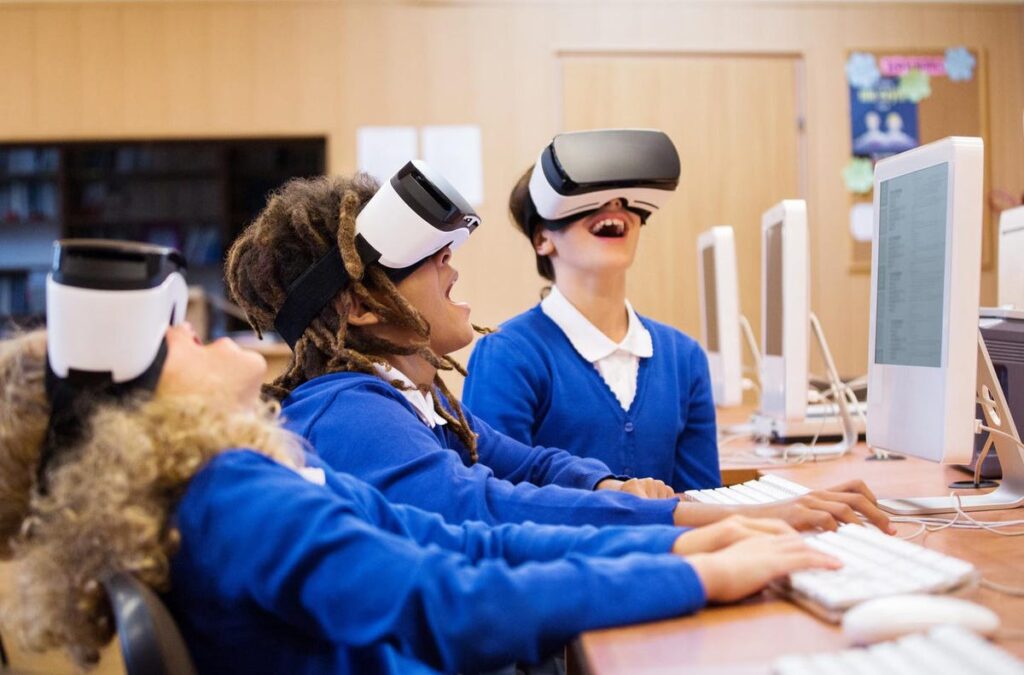Education is an integral part of our lives, and the way we learn is constantly evolving. The traditional classroom setting has been the norm for centuries, but the emergence of virtual environments is revolutionizing the way we learn. With the rise of the metaverse, we have an entirely new way of experiencing and interacting with digital content, and this is transforming the landscape of education. In this article, we’ll explore how virtual environments are changing the face of education and how they can help students learn better.
How Virtual Environments are revolutionizing learning?
Virtual environments are transforming the way we learn by providing an immersive and interactive experience. They allow students to experience things that they would never be able to in a traditional classroom setting. For example, a student can learn about the human body by exploring a virtual representation of it. They can interact with different parts of the body, zoom in on specific organs, and learn about how they function. This type of hands-on learning is much more engaging and effective than reading about it in a textbook.

For example, a history teacher could create a virtual tour of a historical site, allowing students to explore it in detail without the need for expensive field trips. A science teacher could create a virtual lab where students can conduct experiments and see the results in real time. The possibilities are endless.
Not only does the metaverse make learning more engaging, but it also makes it more accessible. Students who may have physical limitations or live in remote areas can still participate in immersive learning experiences. The metaverse also opens up new opportunities for collaboration, allowing students from around the world to work together on projects and share ideas.
Virtual environments can also provide a more personalized learning experience. In a traditional classroom, students all learn at the same pace, regardless of their individual needs. In a virtual environment, however, the experience can be tailored to the individual student’s needs. For example, if a student is struggling with a particular concept, they can spend more time exploring that concept until they fully understand it.
Another benefit of virtual environments is that they can help students learn in a safe and controlled environment. For example, a student who is learning to drive can practice in a virtual environment before getting behind the wheel of a real car. This allows them to gain confidence and experience without putting themselves or others in danger.
The Future of Education in the Metaverse
As the metaverse continues to evolve, so too will its impact on education. In the future, we may see entire schools or universities existing solely in virtual environments, with students and teachers interacting in real time from all corners of the globe. Imagine being able to attend a lecture from a world-renowned expert without ever leaving your living room.
The metaverse also has the potential to completely revolutionize the way we assess learning. Instead of traditional testing methods, students could be evaluated based on their ability to navigate and interact within virtual environments. This would allow for a much more comprehensive assessment of a student’s skills and knowledge.
Applications of the Metaverse in education
The applications of the metaverse in education are vast and varied. Here are a few examples:
- Virtual field trips: Instead of taking students on costly field trips, virtual environments can provide an immersive and engaging alternative. Students can explore different parts of the world, visit historical sites, and learn about different cultures.
- Simulations: Virtual simulations can provide a safe and controlled environment for students to learn practical skills. For example, medical students can practice surgeries in a virtual environment, or engineering students can design and test structures.
- Collaborative learning: The metaverse allows for collaborative learning experiences that are not possible in a traditional classroom setting. Students can work together on projects and assignments, regardless of their physical location.
- Accessibility: Virtual environments can provide access to education for students who may not be able to attend a traditional classroom. For example, students with disabilities or who live in remote areas can still access high-quality education through virtual environments.
Challenges and Limitations of the Metaverse in Education
While virtual environments have many benefits, there are also challenges and limitations to their use in education. One of the main challenges is the cost of the technology required to access virtual environments. VR and AR technologies can be expensive, and not all schools have the resources to invest in them.
Conclusion
The metaverse is still in its infancy, but its potential for revolutionizing education is already apparent. As we continue to explore this new frontier, we can expect to see new and exciting opportunities for learning and collaboration. The metaverse may very well be the key to unlocking a whole new era of education.
